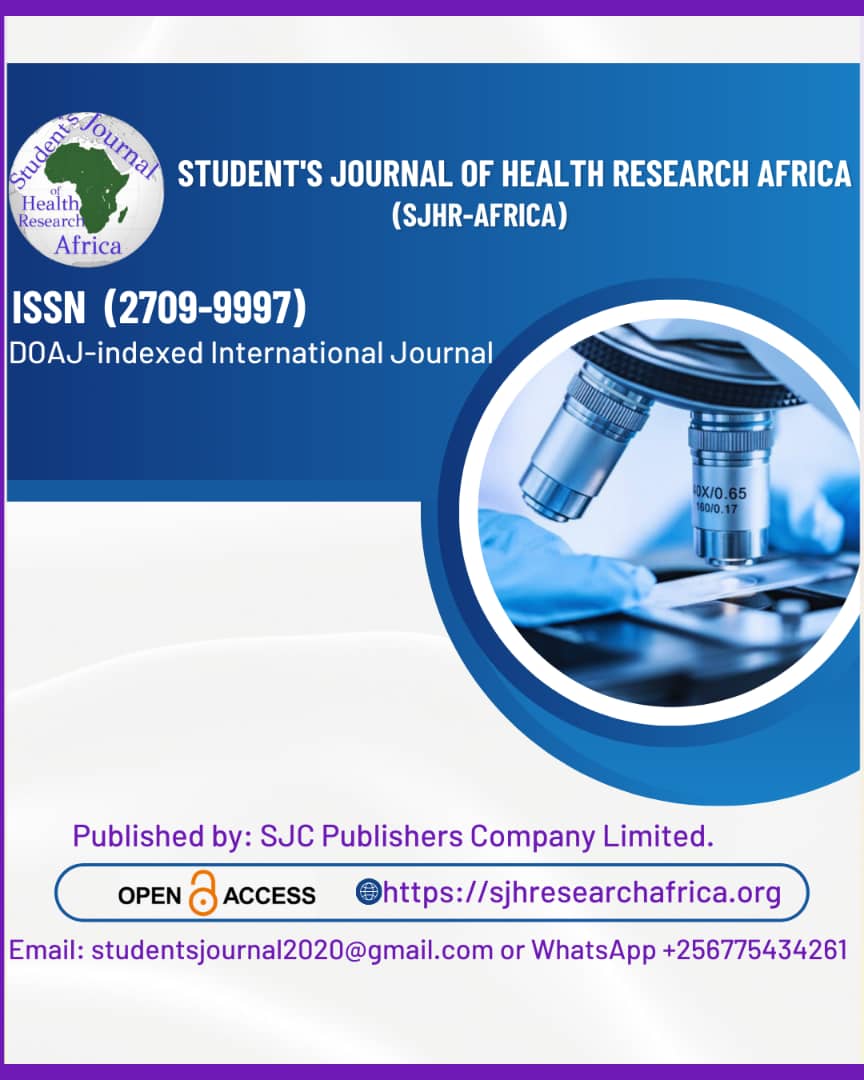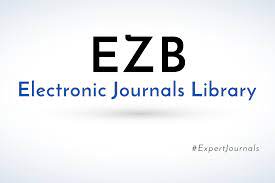EXPLORING THE CORRELATION OF FASTING BLOOD GLUCOSE, SERUM UREA, SERUM CREATININE, AND DIABETES DURATION IN TYPE 2 DIABETIC PATIENTS: A CROSS-SECTIONAL STUDY
DOI:
https://doi.org/10.51168/sjhrafrica.v5i6.1187Keywords:
Fasting blood glucose, Serum urea, Serum creatinine, Type 2 diabetes mellitus, Diabetic nephropathyAbstract
Background
The relationship between fasting blood glucose (FBG), serum creatinine, serum urea, and the course of diabetes provides crucial insights into the management and progression of type 2 diabetes (T2DM). The study compared the clinical and biochemical characteristics of individuals with T2DM to those of age- and sex-matched healthy controls.
Methods
Two groups of seventy people were created: thirty-five with a diagnosis of T2DM and thirty-five age- and sex-matched healthy controls. Using conventional laboratory techniques, blood samples were taken to test the levels of serum creatinine, urea, and fasting blood glucose. A significance level of P < 0.05 was applied when performing statistical analysis using the software SPSS-16.
Results
The mean age of participants was 50 years, with a standard deviation of 8.2 years. The T2DM group had a substantially higher mean fasting blood glucose level (154.7 ± 33.6 mg/dl) than the control group (92.3 ± 10.5 mg/dl) (p < 0.001). Additionally, the T2DM group had higher serum urea levels (32.5 ± 8.1 mg/dl) than the control group (21.6 ± 4.2 mg/dl) (p < 0.01). Comparably, the T2DM group had higher blood creatinine levels (1.2 ± 0.3 mg/dl) than the control group (0.9 ± 0.2 mg/dl) (p < 0.05).
Conclusion
The study found significant correlations between elevated serum urea, FBG, and serum creatinine levels with the course of diabetes in T2DM patients. These markers are indicative of poor glycemic control and renal impairment, highlighting the importance of regular monitoring and early intervention to prevent complications.
Recommendations
Early detection and management of diabetic nephropathy requires regular screening of FBG, serum urea, and serum creatinine in T2DM patients. Intensive glycemic control can enhance patient outcomes and minimize diabetes-related kidney damage.
References
Choudhry, A., Rajeshwari, S., Gururaja, A., Prabhu, K., & Ravishankar, N. (2014). Retrospective correlation of fasting glucose and glycated hemoglobin with serum electrolytes, urea and creatinine in diabetic patients. Asian Pacific Journal of Tropical Disease, 4. https://doi.org/10.1016/S2222-1808(14)60475-8.
Oh, S., Kim, S., Na, K., Chae, D., Kim, S., Jin, D., & Chin, H. (2012). Clinical implications of pathologic diagnosis and classification for diabetic nephropathy. Diabetes research and clinical practice, 97 3, 418-24. https://doi.org/10.1016/j.diabres.2012.03.016.
Singh, N., Aggarwal, J., & Batra, J. (2022). correlation of serum uric acid levels with type II diabetic patients. International journal of health sciences. https://doi.org/10.53730/ijhs.v6ns8.12682.
Mandal, G., & Jyothrimayi, D. (2016). COMPARATIVE STUDY OF MICROALBUMINURIA AND GLYCATED HEMOGLOBIN LEVELS IN TYPE 2 DIABETIC COMPLICATIONS. Asian Journal of Pharmaceutical and Clinical Research, 9, 356-360.
Chutani, A., & Pande, S. (2017). Correlation of serum creatinine and urea with glycemic index and duration of diabetes in Type 1 and Type 2 diabetes mellitus: A comparative study -. National Journal of Physiology, Pharmacy and Pharmacology, 7, 914-919. https://doi.org/10.5455/NJPPP.2017.7.0515606052017.
Ghadge, A., Diwan, A., Harsulkar, A., & Kuvalekar, A. (2017). Gender dependent effects of fasting blood glucose levels and disease duration on biochemical markers in type 2 diabetics: A pilot study. Diabetes & metabolic syndrome, 11 Suppl 1, S481-S489. https://doi.org/10.1016/j.dsx.2017.03.041.
Yang, M., Yu, J., Ma, X., Shao, Y., Wu, C., & Ren, H. (2017). Correlation of the levels of serum betatrophin, adiponectin, and interleukin-1β in newly diagnosed type 2 diabetes with different stages of urinary albumin. Chinese Journal of Endocrinology and Metabolism, 33, 116-119. https://doi.org/10.3760/CMA.J.ISSN.1000-6699.2017.02.005.
Nie, F., Wu, D., Du, H., Yang, X., Yang, M., Pang, X., & Xu, Y. (2017). Serum Klotho protein levels and their correlations with the progression of type 2 diabetes mellitus. Journal of diabetes and its complications, 31 3, 594-598. https://doi.org/10.1016/j.jdiacomp.2016.11.008.
Downloads
Published
How to Cite
Issue
Section
License
Copyright (c) 2024 Anand Sinha, Roli Bharti

This work is licensed under a Creative Commons Attribution-NonCommercial-NoDerivatives 4.0 International License.






















